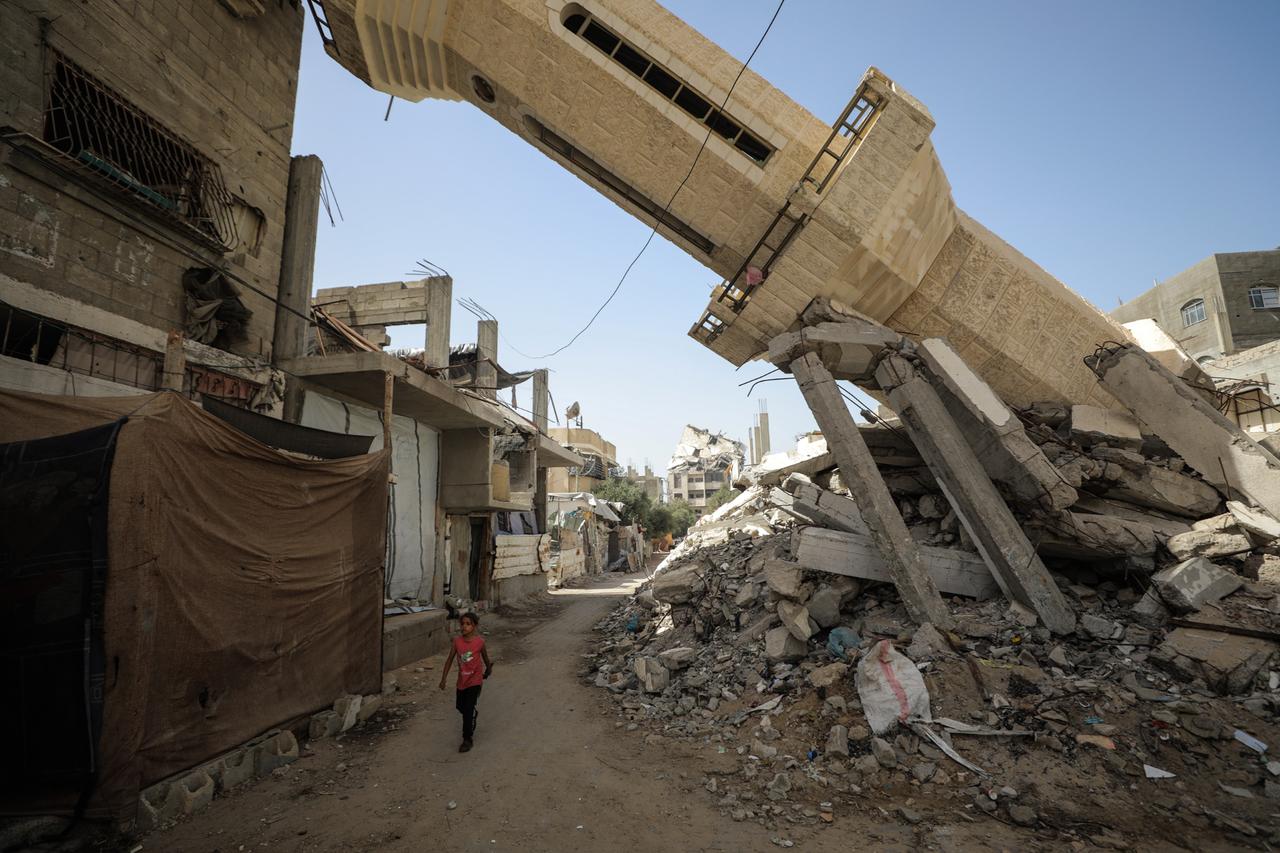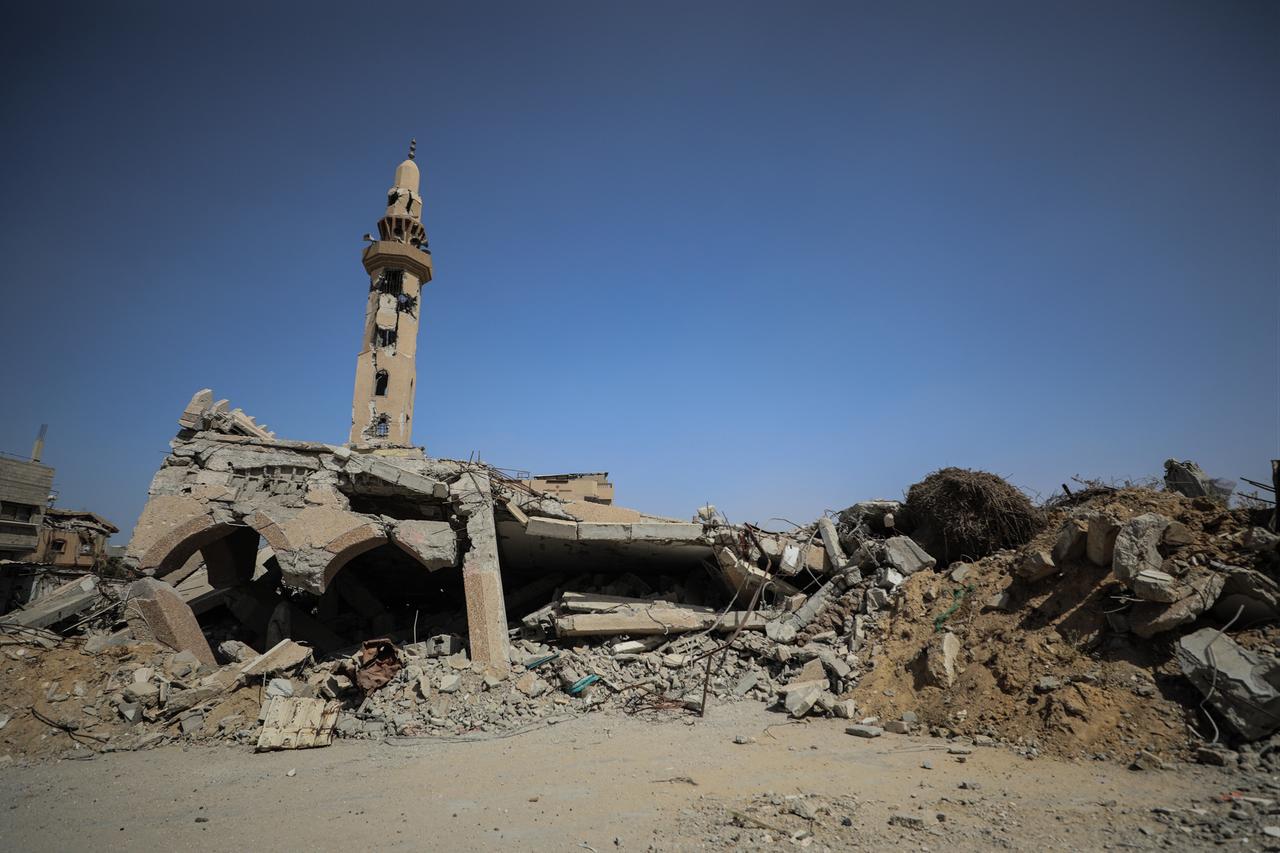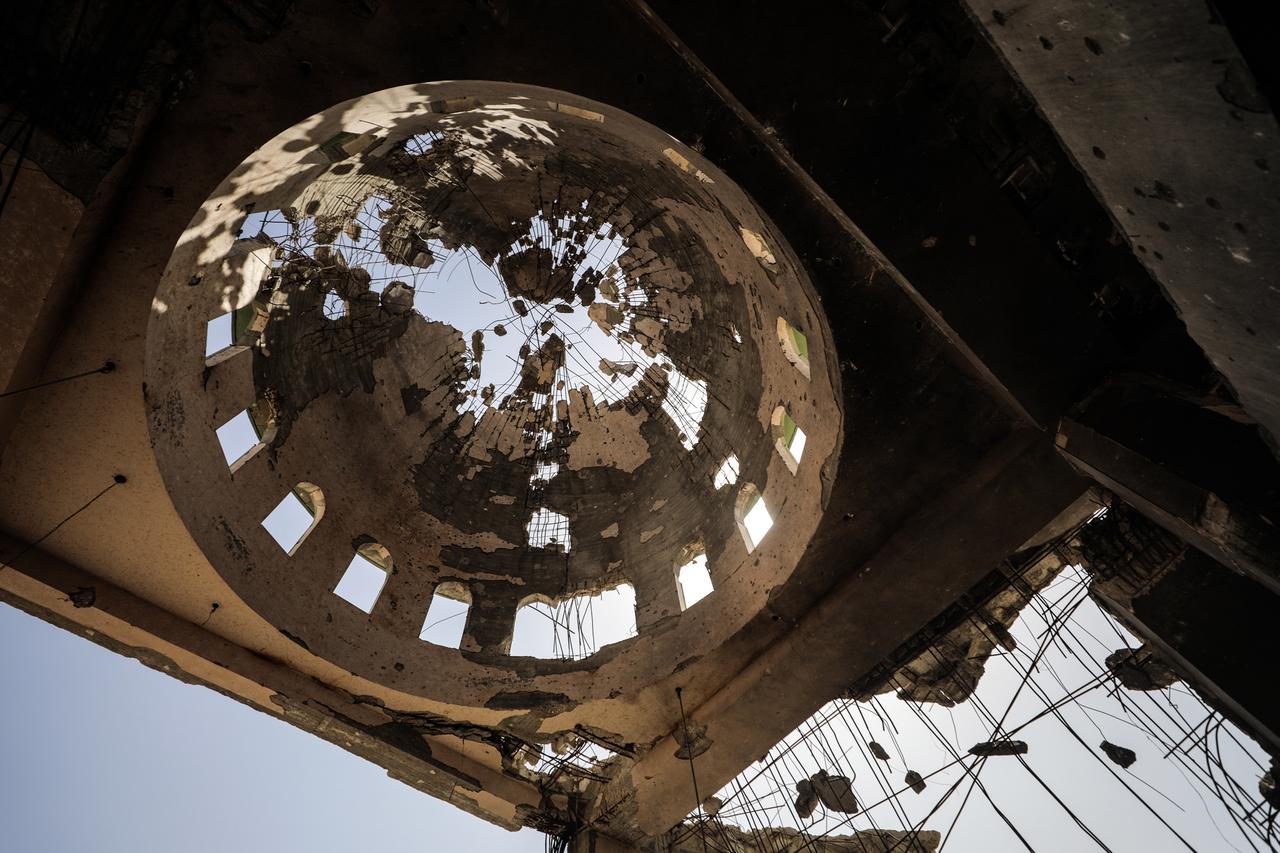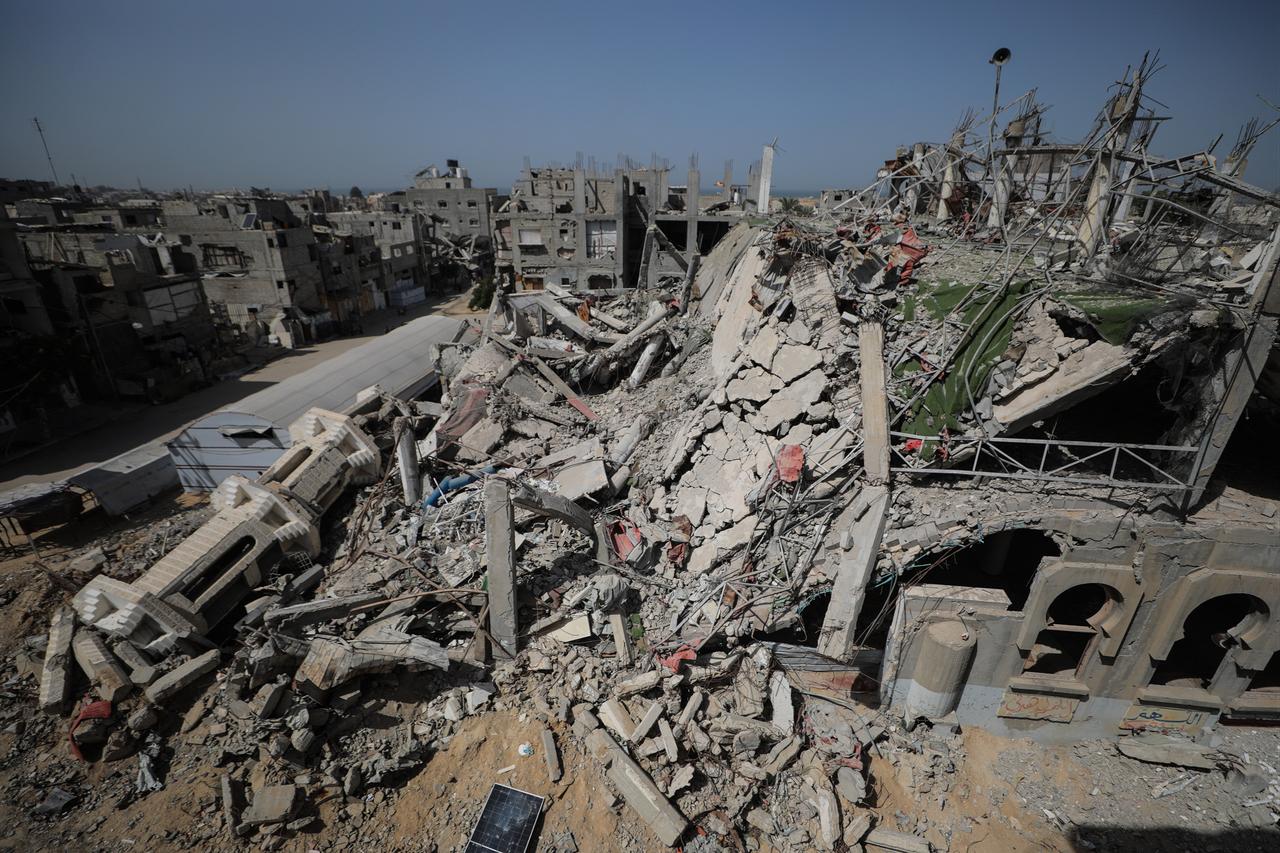
Israel’s ongoing assault on Gaza has erased some of the enclave’s oldest and most significant religious and cultural landmarks. For nearly two years, the bombardments have devastated not only lives and homes but also the architectural heritage that once defined Gaza’s skyline.
According to figures from Gaza’s Government Media Office, out of 1,244 mosques across the Gaza Strip, 835 have been completely destroyed and more than 180 partially damaged. Many of these sacred sites dated back to the Mamluk and Ottoman eras, representing centuries of faith, art, and urban identity.

Among the most iconic was the Great Omari Mosque, a nearly 1,400-year-old structure that served as Gaza’s largest mosque. Once covering more than 5,000 square meters and supported by 38 marble columns, it was often called the “Little Al-Aqsa” by locals for its spiritual importance. Before its destruction, the mosque stood as the third largest in historic Palestine, after Jerusalem’s Al-Aqsa Mosque and Acre’s Ahmed al-Jazzar Mosque.
The Seyyid Hashim Mosque, another major casualty, was built on the burial site of Hashim ibn Abd Manaf, the great-grandfather of Prophet Muhammad (pbuh). His tomb gave Gaza its traditional epithet “Ghazza of Hashim.” The mosque suffered severe damage in an airstrike on December 7, 2023.

The Katib al-Wilaya Mosque, built during the reign of Mamluk Sultan al-Nasir Muhammad ibn Qalawun (1309–1341), once stood beside the city’s Porphyrius Church, a symbol of Gaza’s layered religious coexistence. It was heavily damaged in Israeli shelling on October 17, 2023.
Another Mamluk-era structure, the Ibn Osman Mosque, built in the 14th century by Ahmed ibn Osman of Nablus, was the second-largest historic mosque in Gaza. Known for its refined stonework and located near the old marketplace of the Shuja’iyya neighborhood, it sustained extensive destruction.
The Ali ibn Marwan Mosque, named after a Sufi saint buried there, was built in 1371 on Gaza’s eastern edge. Over the centuries, it had been restored numerous times, preserving its place in collective memory—until recent strikes left it in ruins.

Several smaller yet historically significant mosques have also vanished. The Zafar al-Dimri Mosque (built in 1361) with its distinctive horseshoe arch, and the Bardibekiyya Mosque (1455), originally a madrasa later used as an Ottoman-era sharia court, were both completely destroyed.
The Sitt Rukiyya Mosque, a modest 18th-century shrine named after an Ottoman woman, and the Sheikh Osman Kashgar Mosque, dating back to 1223 and once famous for its 13th-century stone inscription, were also obliterated.
In southern Gaza, the Great Khan Younis Mosque, built in 1928 and later expanded to over 3,000 square meters, was flattened as well.